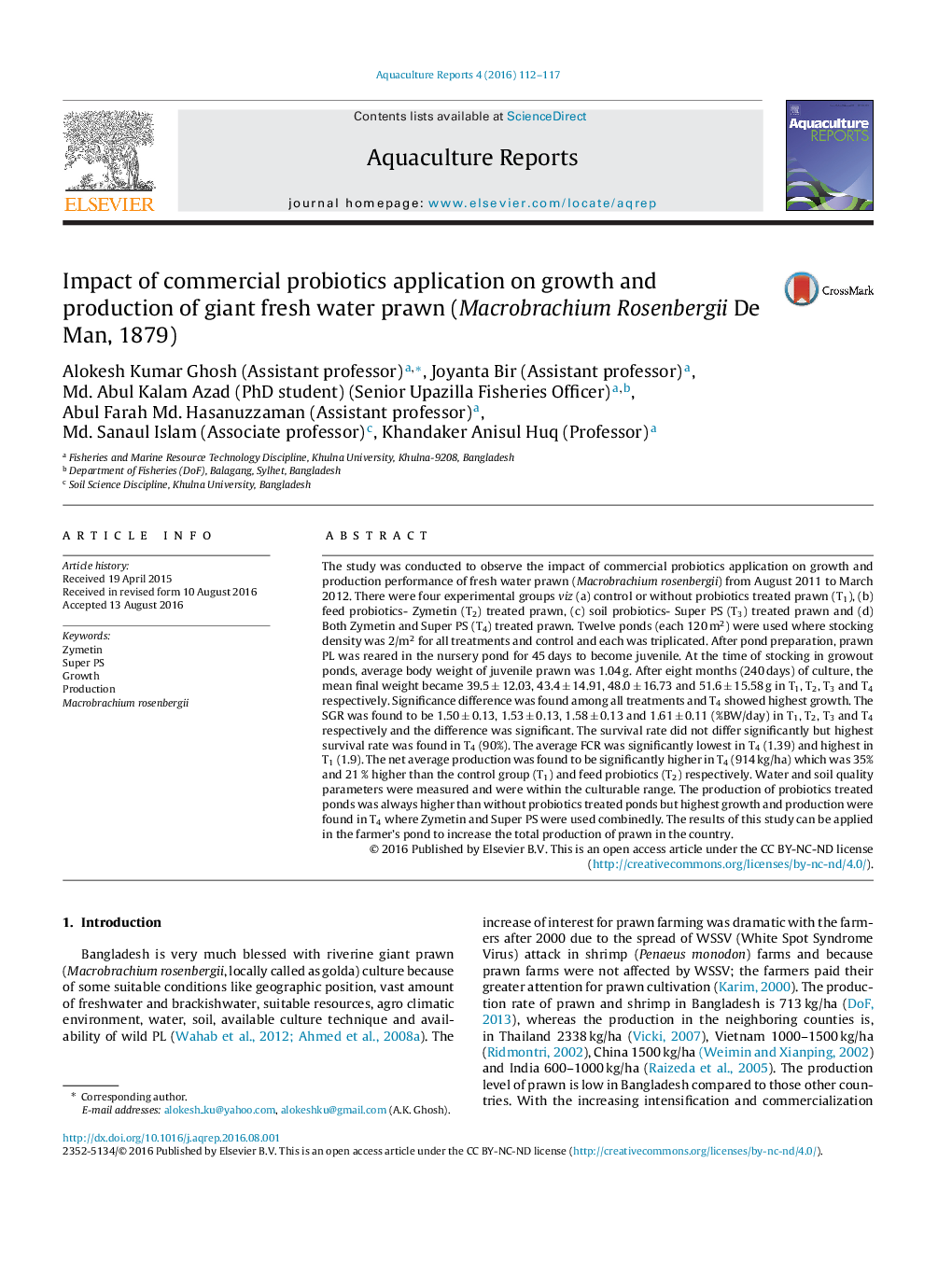| Article ID | Journal | Published Year | Pages | File Type |
|---|---|---|---|---|
| 4437952 | Aquaculture Reports | 2016 | 6 Pages |
•Macrobrachium rosenbergii farming is one of the vital sectors of the national economy in Bangladesh with its diverse contributions.•Probiotics is attaining high acceptance to both producers and customers for its efficacy, reasonable cost and less side effects.•Highest growth and production was found in that treatment where Zymetin and Super PS probiotics were used combinedly.•The findings of the research could be used in farmer’s pond to increase the production of prawn.
The study was conducted to observe the impact of commercial probiotics application on growth and production performance of fresh water prawn (Macrobrachium rosenbergii) from August 2011 to March 2012. There were four experimental groups viz (a) control or without probiotics treated prawn (T1), (b) feed probiotics- Zymetin (T2) treated prawn, (c) soil probiotics- Super PS (T3) treated prawn and (d) Both Zymetin and Super PS (T4) treated prawn. Twelve ponds (each 120 m2) were used where stocking density was 2/m2 for all treatments and control and each was triplicated. After pond preparation, prawn PL was reared in the nursery pond for 45 days to become juvenile. At the time of stocking in growout ponds, average body weight of juvenile prawn was 1.04 g. After eight months (240 days) of culture, the mean final weight became 39.5 ± 12.03, 43.4 ± 14.91, 48.0 ± 16.73 and 51.6 ± 15.58 g in T1, T2, T3 and T4 respectively. Significance difference was found among all treatments and T4 showed highest growth. The SGR was found to be 1.50 ± 0.13, 1.53 ± 0.13, 1.58 ± 0.13 and 1.61 ± 0.11 (%BW/day) in T1, T2, T3 and T4 respectively and the difference was significant. The survival rate did not differ significantly but highest survival rate was found in T4 (90%). The average FCR was significantly lowest in T4 (1.39) and highest in T1 (1.9). The net average production was found to be significantly higher in T4 (914 kg/ha) which was 35% and 21 % higher than the control group (T1) and feed probiotics (T2) respectively. Water and soil quality parameters were measured and were within the culturable range. The production of probiotics treated ponds was always higher than without probiotics treated ponds but highest growth and production were found in T4 where Zymetin and Super PS were used combinedly. The results of this study can be applied in the farmer’s pond to increase the total production of prawn in the country.
